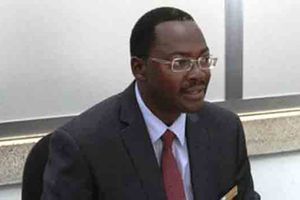Conflict of interest brews at Selous after new discoveries

What you need to know:
- Extraction of the minerals, which would bring the country plenty of money, would take a few decades depending on how technology advances
Dar es Salaam. Conflict of interests may be brewing at the Selous Game Reserve following the discovery of several mineral varieties in the area.
The Geological Survey of Tanzania (GST) revealed the new discoveries during an interview with The Citizen recently, hinting that environment conservationists would be up in arms when the need to extract them arises.
The extraction of the minerals, which would bring the country plenty of money, however, would take a few decades depending on advancement of technology .
GST senior Geologist Solomon Maswi named the minerals discovered as base metal, copper, silver, cobalt, Zinc among others while gold is among the precious minerals in the area.
Mr Maswi told The Citizen that to extract the minerals with the current technology would be expensive, adding that it would take a few decades to start mining them efficiently.
“We anticipate that with technological changes, there will come a time when we can easily mine the discovered minerals,” he said.
GST did a survey last February in areas close to the Selous Game Reserve, specifically, at the boundaries of the reserve in Malinyi and Mahenge Districts in Morogoro region.
He explained that the GST was mandated to conduct such surveys in order to fill gap that will enable the country to understand where minerals are located for current and future extractions.
“After completing our survey, we took samples of the soil and rocks found at the site to our laboratory and after our primary investigation it was revealed that there were precious minerals at the sites,” he said.
However, he noted that according to their analyses it would take a long time to attract investors because there are doubts about their quantity.
Elaborating further, he said that the minerals are available under ultramafic and mafic rocks, which are rich in magnesium, which is a favourable condition for the base metals. He added that for precious metals they are normally found in Nyanzian green rocks that are normally found in Lake Zone areas, but can also be found in other areas with similar conditions.
Tanzania had already discovered Uranium in the Selous ecosystem and plans to mine mineral at Mkuju River close to the reserve are afoot.
The Game Reserve is listed as of the World Heritage Site under the United Nations Educational, Scientific and Cultural Organisation (Unesco).
However, at its 36th session in St Petersburg, Russia, in July 2012, the Unesco’s World Heritage Committee approved an application by the government of Tanzania for a minor adjustment to the boundary of the game reserve to facilitate the mining of Uranium.
Tanzania is a country rich in natural resources, which include metals (gold, iron ore, nickel, copper, cobalt, silver), industrial minerals (diamond, tanzanite, ruby, garnet, limestone, soda ash, gypsum, salt, phosphate, gravel, sand among others.
Mining makes up more than 50 per cent of the country’s total exports, of which a large part comes from gold. The country has gold reserves of 45 million ounces, generating revenue of over billion dollars.




